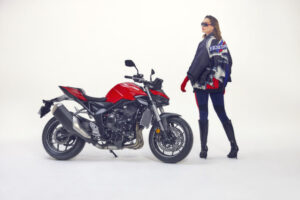Celebrating 120 years of Harley-Davidson

Image courtesy of Harley-Davidson
Harley-Davidson celebrates its 120th birthday in 2023. First produced in 1903, a mere eighteen years after the invention of the motorcycle, few manufacturers can claim the influence that Harley has had. In this blog, we take a look at some of the machines produced by the Milwaukee company that have helped shape the history of motorcycles.
The early years of Harley-Davidson
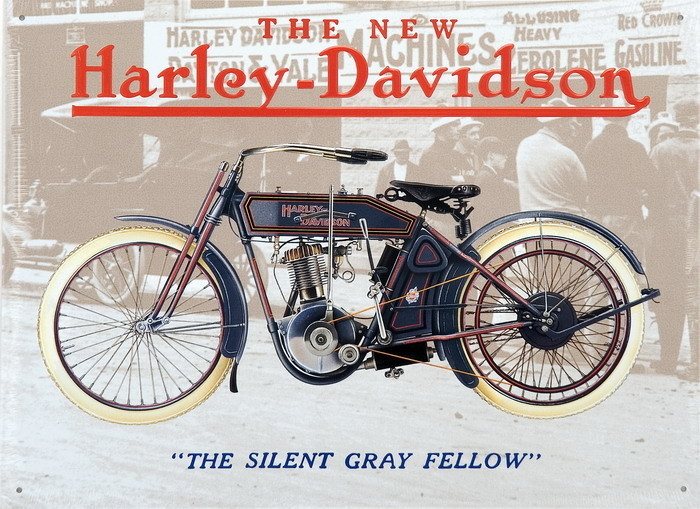 Image courtesy of Harley-Davidson
Image courtesy of Harley-Davidson
Childhood friends William Harley and Arthur Davidson were, like many people in the late 19th century, very enthused by the new methods of transport that were being invented at the time. The two men went to work at a bicycle company in Wisconsin, where Harley designed his first internal combustion engine. In 1903, they decided to branch out on their own to build motorcycles, quickly roping in two of Davidson’s brothers to help.
From 1903 to 1915 saw the fledgling company release a new model of bike virtually every year, making rapid advances in technology. The initial model was, like most motorcycles at the time, essentially a heavy-duty bicycle with a 404cc motor attached to it. Indeed it still had pedals, which you needed to use if you were going uphill.
The second prototype had a more powerful engine, becoming the first Harley-Davidson to compete in a motorcycle race, where it finished in fourth place.
The company moved into its first factory in 1906, at the current location of its headquarters in Milwaukee. The V-twin engine was introduced in the Model 7D, with engine capacity increasing until the model 11F reached 1000cc in 1915, delivering a mighty – for the time – 11 horsepower.
The first model with three gear speeds, as well as head and tail lights, it was certainly ahead of most other motorcycles available at the time, and it was the bike that helped improve Harley-Davidson’s reputation.
Becoming an iconic motorcycle brand
The next few years saw Harley-Davidson develop the look and style that would become almost synonymous with the company. The 1920s saw the rounded, teardrop-shaped fuel tank introduced, which allowed the seat to be moved closer to the frame, and the lowered rear forks that produced the classic Harley-Davidson silhouette.
The 1936 EL – or “knucklehead” as it became commonly known thanks to its engine design – was the last motorcycle to be designed by William Harley. It featured an oil recirculation system that significantly improved the efficiency and lifespan of the engine. Thanks to its reliability and competitive price, the company was one of the few American bike manufacturers to survive the great depression, but it was during the years following World War Two when the company would truly establish its place in popular culture.
Creating customisable motorcycles
Customising your motorcycle had been fairly common before the war, but it really exploded in popularity in the decades following. This was undoubtedly helped by the availability of cheap army surplus bikes. At Harley-Davidson, 1948 saw the introduction of the new “panhead” engine, and the following year saw the company update its FL model with hydraulic suspension and a new name, the Hydra-Glide. Designed for touring, many owners would customise it either to increase its speed or riding comfort.
In 1957, the company would release the XL Sportster, aimed to compete with more manoeuvrable European motorcycles. Harley-Davidson continues to release Sportsters to this day, although in 2020, Euro 5 regulations finally forced them to redesign the engine to one not derived from the one used back when it was first released.
Their 1969 Electra Glide would be the first model with the “batwing” fairings that would become almost a standard feature on all the company’s bikes in later years. Popular custom styles like the chopper, with its extended front forks, would in time be officially adopted, with 1971’s Super Glide becoming Harley-Davidson’s first “factory custom.”
Becoming an aspirational brand
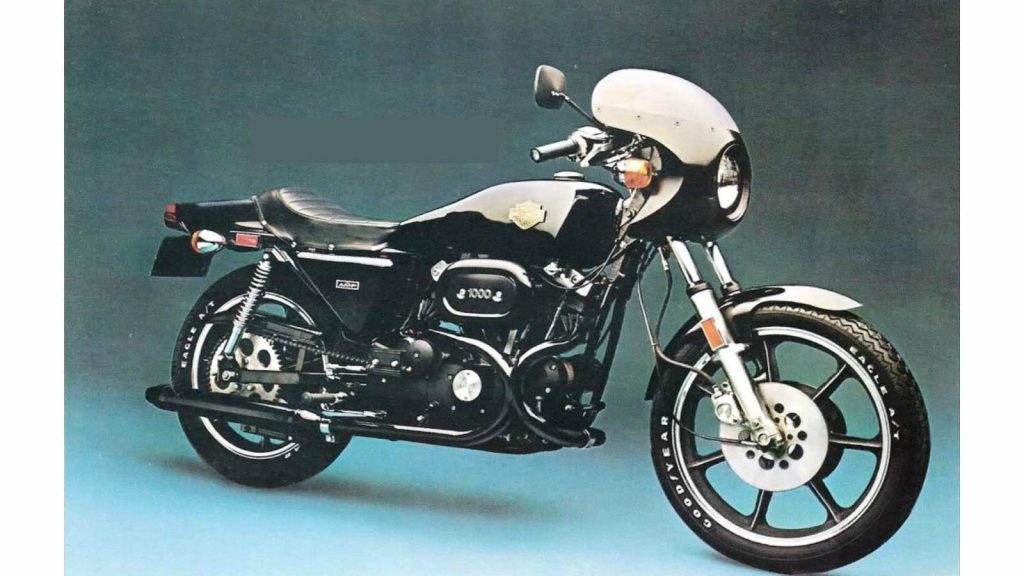 Image courtesy of Harley-Davidson
Image courtesy of Harley-Davidson
By the 1970s, Harley-Davidson was in an interesting position. Its bikes were basically the American motorcycle, but were being outflanked on reliability, speed and, most importantly, affordability by the new wave of Japanese manufacturers.
Their use in films like Easy Rider cemented their place in the public consciousness, and the company began aiming their bikes as more aspirational items rather than simply a method of getting from A to B. You got a Harley if you wanted to make a statement – that statement being “I can afford a Harley.”
And enough people wanted to make that statement. While some of the underlying tech might have been showing its age, the bikes themselves always looked great, with the biggest models’ flowing lines, low slung frame and growling engines making them instantly recognisable. Alongside this, Harley-Davidson produced the XLCR Café Racer in 1977 and the MX250 motocrosser, helping to keep a connection to its racing roots.
Leaning into the Harley-Davidson legacy
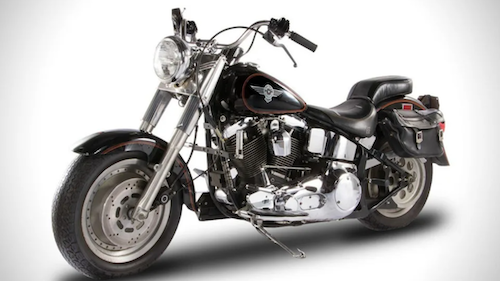 Image courtesy of Harley-Davidson
Image courtesy of Harley-Davidson
After starting the eighties with a spot of corporate restructuring, Harley-Davidson spent the rest of the decade leaning into their legacy by rebranding “old fashioned” as “retro” and producing ever more flamboyant, flowing designs.
The launch of the FXST Softail in 1983 saw another custom design become official. This featured hidden rear suspension forks, which gave the clean lines beloved by a significant portion of bikers while also delivering a more comfortable ride. Bikes with softail frames remain a popular part of Harley-Davidson’s range to this day.
At the start of the 90s, popular culture once again put the company on the map, with the FLSTF Fat Boy appearing in Terminator 2. The film also featured a robot that could go soft. See: it all ties together!
Innovating with electric motorcycles
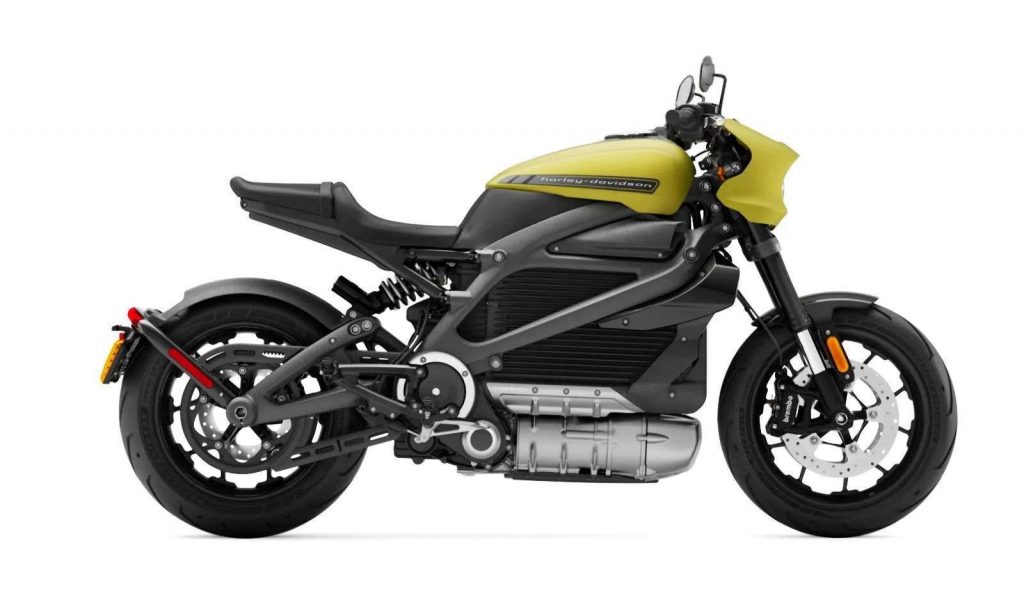 Image courtesy of Harley-Davidson
Image courtesy of Harley-Davidson
Harley-Davidson’s line up in the 21st century has evolved into three styles of bikes: sports, cruisers, and tourers, including trikes if the standard two-wheeled tourers aren’t comfortable enough for you.
With the company well into its second century, their line-up reflects its heritage in every sweeping line, and while they’re still fairly uncommon sights on the roads of the UK, they remain many a biker’s dream bike and retain a loyal following.
In 2019, Harley-Davidson released what was quite possibly the most significant bike for the future of the company. The Livewire was their first electric motorcycle, and they knew they needed to get it right. Which they undoubtedly did – the Livewire is a more compact, sporty and modern looking machine than the stereotypical Harley-Davidson. With the instant acceleration afforded by electric motors, this was an obvious direction for the company in their first step into a new sector.
The real test will be what their second electric motorcycle looks like. An all-electric cruiser or tourer could help keep Harley-Davidson in their position as one of the most important motorcycle companies in the world for the next 120 years.
Motorcycle insurance designed to save you money
No matter which motorcycle you ride, Bikesure is able to offer you affordable Harley-Davidson motorcycle insurance to suit your individual needs. Call for a free quote today on 0330 123 1028 or book a callback at a time that suits you.
Motorbikes


